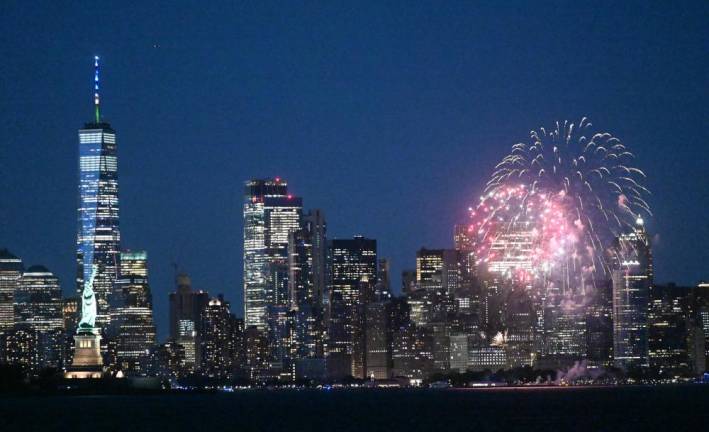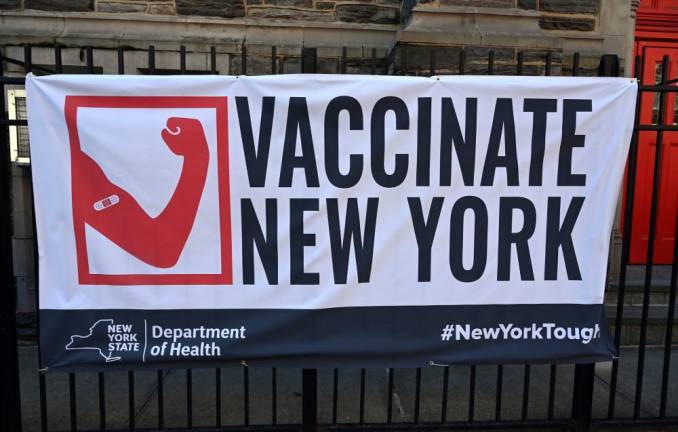It is a tale of two ZIP codes. Both are neighborhoods in Manhattan, connected by the B and 3 trains, yet worlds apart. In one, Hell’s Kitchen around Times Square, vaccination against COVID-19 is nearly universal, according to city data. In the other, Bradhurst along the Harlem River in north central Harlem, barely a third of residents have been fully vaccinated.
As officials celebrated the reopening of New York last week with fireworks and plans for a parade down the Canyon of Heroes, the tale of these two neighborhoods creates a worrisome backdrop.
Governor Andrew Cuomo announced that he was ending nearly all pandemic restrictions because 70 percent of adults had received at least one dose of vaccine. But that broad figure conceals as much as it reveals.
“Because of the disparity, these averages don’t make sense,” said Victoria Ngo, Associate Professor of Community Health at the City University’s Graduate School of Public Health & Health Policy. “They are not reflective of anyone’s reality.”
Vaccine disparity is a global challenge. There are low income countries that have yet to distribute a single dose of vaccine, even as the rich world presses toward widespread immunization.
But even here in one of the richest cities in the rich world, there is profound disparity, jarring both for the inequity and for the vulnerability it leaves for resurgence of COVID-19 variants.
It is hardly new to say that race and class – even ZIP codes – are determinants of our health and well being. “What COVID did was expose what we knew all along around structural racism and the impact in communities,” said Deborah Levine, who heads the Harlem Health Initiative at the CUNY school of public health.
Going into the pandemic rates of infection and death closely tracked measures of poverty, race and ethnicity. Now on the other side, rates of vaccination coverage also closely track those societal measures.
“Earned Hesitancy”
The conversation about vaccination rates tends to focus on the “hesitancy” of individuals. But Dr. Carol Horowitz of Mount Sinai Medical School suggests a better phrase is “earned hesitancy.” It is more accurate, Horowitz said, to see the disparities as the predictable result of preexisting differences in access to medical care, trust in institutions and the basic resources to take time to get vaccinated.
She suggests the right question is not why there are differences, but why wouldn’t there be differences?
“There has been a great awakening that people are starting to recognize race matters, poverty matters,” said Horowitz, co-director of Mount Sinai’s Institute for Health, Equity and Research.
This pattern is not hard to recognize in a comparison of the Manhattan neighborhoods with the highest and lowest vaccination rates, as reported in a ZIP code map by the city’s Department of Health.
The lowest vaccination rate is in the 10039 ZIP code, which covers north central Harlem. As gentrification has changed much of Harlem, increasing incomes and reducing the African-American proportion of the population, 10039 continues to be poor and overwhelming African-American.
“If someone wanted to study Harlem in a time capsule they would come to 10039,” said Malcolm Punter, the President and CEO of Harlem Congregations for Community Improvement, whose offices on West 153rd Street are in the middle of 10039.
As of Saturday, 40 percent of residents of 10039 had received at least one dose of vaccine and 34.6 percent were fully vaccinated, according to the city data.
Different Outcome
A very different outcome can be found in 10036, which runs from the Hudson River to Fifth Avenue through Times Square and the theater district. The neighborhood is still called Hell’s Kitchen, but has little resemblance to the ethnic “melting pot” that gave it that name.
In 10036, 100 percent of residents were reported as having received at least a first dose of vaccine and 91.4 percent were fully vaccinated, according to the city data.
While that 100 percent claim seems open to question (the health department did not respond to those questions), the basic disparity between 10036 and 10039 remained stark.
The two ZIP codes are roughly equal in population size, about 27,000 residents each. But the similarity ends there.
The median income in Bradhurst is $33,595, half of Hell’s Kitchen’s $66,599. That income disparity is no doubt in part a result of the disparity in education. In Bradhurst, one resident in four over 25 had a college degree or higher. In Hell’s Kitchen it is 2 out of 3.
The income data also suggests far greater financial resources and flexibility in Hell’s Kitchen, a crucial factor in the ability to take time out to be vaccinated. In 10036, average household income from dividends and capital gains was $228,185. In 10039 it was $6,108.
Despite almost identical population size, there are 18,000 units of housing in 10036 and only 10,800 in 10039, a partial explanation for a death rate of 342 per 100,000 in 10039 compared to 209 per 100,000 in 10036.
A substantial share of the housing in 10039 is public housing, including one of the first federally supported projects in the city, Harlem River Houses, built in the Depression. Hell’s Kitchen, on the other hand, is noteworthy for the gleaming apartment towers that have risen along 42d Street in recent years and, of course, for a very famous publicly supported apartment complex, Manhattan Plaza, that was rescued by the state in the 1970s from the financial crisis by converting it to homes for actors, dancers and other arts people.
Theater People
Joseph P. Benincasa, President and CEO of the Actors Fund, suggested that the presence of so many theater people in the neighborhood helped accelerate vaccination. “We have so many creatives living on the West Side and Hell’s Kitchen,” he said. “They saw it as their obligation to go get vaccinated. They sought out vaccination. They wanted to be back on stage.”
Marlie Buehler has lived in Manhattan Plaza since 1995 and teaches tennis at the Racquet club there. “Manhattan Plaza has a very strong tenants’ association and the leaders advocated for receiving the vaccine very early on,” she recalled.
The landlord, Related, responded quickly, she said, arranging with CVS for tenants to receive the vaccine. “It was incredibly convenient and efficiently organized at a time when other NYC residents were having great difficulty finding vaccine possibilities,” she recalled. “The first wave had been vaccinated twice by the first weeks of February.”
In many ways, it feels as if Bradhurst is fighting hard to do now what the better resourced neighborhood of Hell’s Kitchen accomplished months ago, by making vaccination widely available. This includes walk in clinics without appointments, mobile vaccine units and a fire department program that will send a vaccinator to your home.
Harlem Congregations for Community Improvement has conducted six virtual town halls to combat what Punter described as “historical distrust” and “sustained misinformation that has occurred in the media and through high profile elected officials.”
Punter offered a close to home example of the importance of having known and trusted figures convince people to be vaccinated.
Actually, it wasn’t close to home. It was at home. “In my own household, I convinced my wife,” he said. They are still discussing whether to vaccinate their 13 year old.
“I don’t think it is going to be safe,” he said, “unless we get people vaccinated.”
We have so many creatives living on the West Side and Hell’s Kitchen. They saw it as their obligation to go get vaccinated ... They wanted to be back on stage.” Joseph P. Benincasa, President and CEO of the Actors Fund

